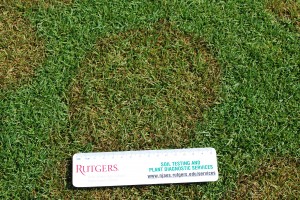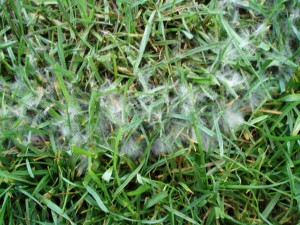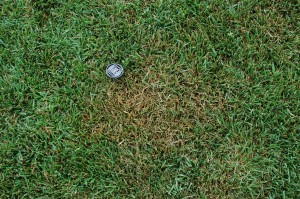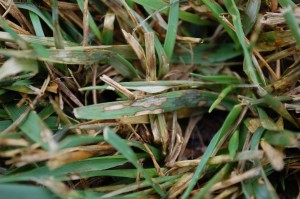Patch that is! Recent weather conditions have driven the fungus Rhizoctonia solani into overdrive. Brown patch has flared up all over the place just in time for our July 4th celebrations!
Brown patch disease in cool season turfgrasses is highly damaging when surface moisture is present or the relative humidity is high and night temperatures are above 68ºF. Schumann et al. in 1994 published predictive models for the disease that suggested fungal activity at soil and air temperatures of 59 and 61ºF respectively, 95% relative humidity, and 0.1’’ of rain or irrigation in the preceding 36 hours. In layman’s terms – hazy, hot, and humid – and in recent weather terms – every day of the last two weeks!
Cool season turfgrasses vary in susceptibility to the disease. Colonial bentgrasses on golf courses are super sensitive to the fungus, so they take considerable damage. In landscape turf, perennial ryegrasses and turf-type tall fescues are the most sensitive. In fact, brown patch might just be the Achilles’ heel of the otherwise superior turf-type tall fescues used in landscape turf situations.
Look for large patches – up to three feet in diameter – of thinning and browning turfgrass. The symptoms in taller cut grass are often subtle, but a closer look will reveal classic leaf lesions that are irregular-shaped and tan with reddish borders. Occasionally, fungal mycelium is evident as a “smoke ring” around the outside of the patches. You’ve got to get up early to see the smoke ring in the morning dew, but it is there, even in taller cut turfgrass.
Fortunately, brown patch is easy to control. In the landscape, the grass will recover when the weather changes. Use moderate inputs – not too much N, but enough to aid recovery. Mow at recommended cutting heights – not too short or too tall – and keep the turfgrass as dry as possible and you should weather the storm without fail. And remember that during the dog days of summer, the thunder won’t get ya, but the brown patch will!





